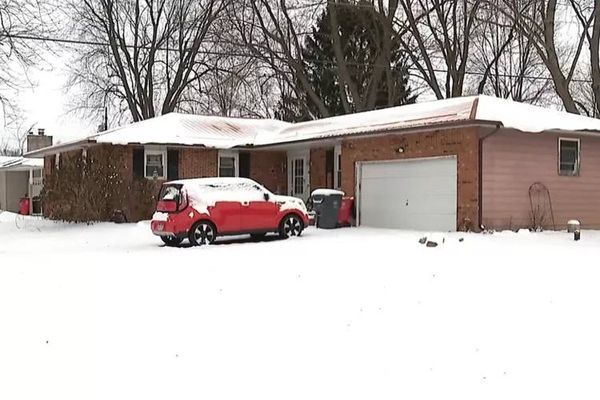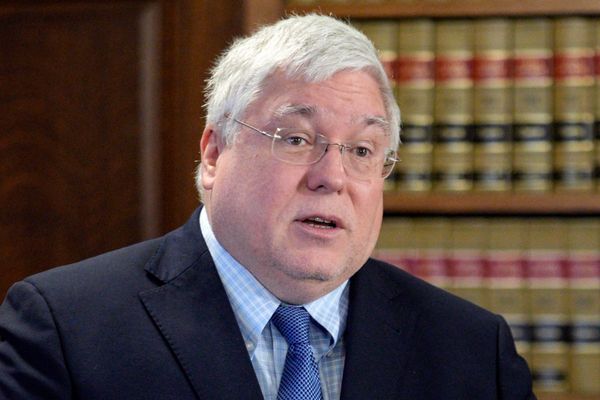
You have to see it to believe it. A few days after Christmas, I hit my head on a scaffolding bolt. There was lots of blood and pain down the right side of my face and into my neck. I thought I could live with it, but the following day I noticed a black floater in my right eye. When, after several hours, it had failed to clear, I phoned 111. They told me to travel immediately to the emergency department at my local hospital. They booked me in for 9pm, my expected arrival time.
I naively imagined I would be seen then. But when I arrived, there were 16 ambulances waiting to offload their patients. The waiting room was a vision of hell. All the chairs were occupied. Sick people leaned against the walls. Many of the patients, from babies to the extremely aged, looked dangerously unwell. And yet, for all of us, the wait went on and on.
I was seen by a doctor at 3am. During those six hours, I witnessed two things that distressed me more than my own injury. A man with what appeared to be cardiac symptoms collapsed on to the floor, possibly from a heart attack. A toddler was screaming “it hurts, it hurts!” for almost three hours without a break. It was devastating to hear.
When I was called by a nurse, halfway through my wait, I asked whether this was an especially busy night. “Oh no,” she told me, “this is quite a quiet one. Most nights recently have been worse.” Nothing I saw was the fault of the staff, who were working at a frantic pace to manage an impossible load. They looked exhausted. What I witnessed were the extraordinary but now normal effects of 13 years of austerity. Hospitals across the country appear to be approaching a tipping point.
Last week I spoke to an accident and emergency consultant at a London teaching hospital. She told me that several of the nurses there are now dependent on food banks. Junior doctors with massive student debts are paid £14 an hour. Yet every day they must carry unbearable loads and make morally corrosive decisions, as they decide whom to prioritise among people with immediate needs. Very long waits ensure that “frustrated and frightened patients are being seen by exhausted, demoralised health workers”. Verbal and physical aggression is commonplace. Unsurprisingly, staff are leaving in droves, and she can’t fill the vacant places.
There must come a point at which those who remain can no longer cope, and will be forced out as the mental, physical and moral pressure becomes too great. What happens then? Don’t ask the government. It denies the very existence of the crisis.
A recent study suggests that the death rate rises by 8% among people who have to wait more than six hours for transfer from emergency departments. One estimate suggests that delays in emergency care are killing between 300 and 500 people a week in England. This is to say nothing of the millions of lost hours and the infections circulating in tightly packed waiting rooms. The government’s NHS “savings” are the mother of all false economies.

With one breath, the government claims to have vanquished Covid so effectively that it no longer needs to publish the infection rate. With the next, it blames the Covid pandemic for the pressure on the NHS. While it’s true that Covid and flu are aggravating factors, the real cause runs much deeper: years of systemic underfunding.
The cumulative NHS funding gap since 2010 is more than £200bn. What this means, as the recent book NHS Under Siege by John Lister and Jacky Davis explains, is the difference between the money the service would have received if funding levels prior to 2010 had been sustained, and the money it has received since. For all New Labour’s flaws, it followed the globally accepted rule that to keep pace with an ageing population and technological change a modern health system requires an annual 4% real terms increase in funding. When the Tories reject the idea of “endlessly putting in more and more money”, they reject the idea of sustaining a functional service.
Since 2010, almost 9,000 general and acute beds have been lost in England. Of these, 5,000 were closed in March 2020 for the sake of social distancing and infection control. They have never reopened, because the NHS does not have the money required to reorganise its buildings. While the Organisation for Economic Co-operation and Development (OECD) average is five beds per 1,000 people, the UK has 2.4. In September 2021, the Royal College of Emergency Medicine warned that the NHS had a deficit of 15,000 beds for emergency care. But nothing was done.
The beds crisis is compounded by a parallel disaster: the privatisation and defunding of social care that began under the Tories in the 1990s. Because the social care system is now in permanent crisis, lacking funding, staff and places, an average of 13,000 NHS beds are occupied by patients who could otherwise leave.
Amid all the reorganisations, deorganisations, swerves and U-turns, there have been two consistent policies across the past 13 years: underfunding of the NHS and overfunding of the private sector.
In the same month that the government closed 5,000 NHS beds, it block-booked all 8,000 beds in England’s private hospitals, and covered their entire operating costs. In return, these hospitals were required to do … nothing. It was free money. Rather than relieving the pandemic pressure, the 187 private hospitals treated, between them, a grand total of eight Covid patients a day. And, perhaps because they were now being paid merely for existing, they greatly reduced the other NHS-funded procedures they handled.
In 2021, through a scarcely noticed policy that seems to me just as scandalous as its corrupt PPE deals, the government extended these payments for doing nothing for a further four years, with a new “framework contract” for private hospitals. The expected cost is £10bn.
Even when they do treat patients, transferring NHS services to private hospitals does not increase capacity. It diverts the money that would have been spent in the public sector to a less efficient and more costly service. Private hospitals don’t train their own doctors and nurses. They cannot offer more services without sucking staff out of the NHS.
I’m fine, by the way. By the time the doctor saw me, my symptoms had cleared. But the NHS is bleeding out in the government’s waiting room, hoping for a call that never comes.
George Monbiot is a Guardian columnist







